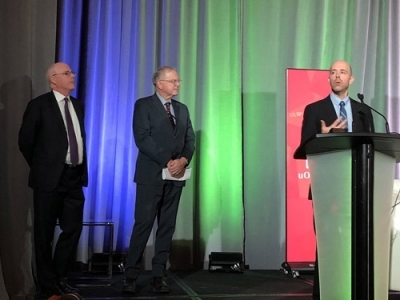By Tyrone Burke
Photos by Chris Roussakis
A tiny house can be emblematic of simplicity and minimalism, or an affordable entry point in to an overheated housing market.
But the Northern Nomad at Carleton University is more than that. It’s Scott Bucking’s vision of sustainability, made manifest through two years of design and construction by students in the Faculty of Engineering and Design.
The Northern Nomad began when Bucking assigned a fourth-year capstone project. The assistant professor in Building Information Modelling challenged his students to create an energy autonomous house in fall 2016. On Saturday, Sept. 8, 2018, they revealed the fruits of their labour by opening the doors to the public – in small doses, of course.
At 220 square feet, the Northern Nomad is, well, tiny. But while floor space may be limited, even the smallest details received careful consideration.
“Most people don’t realize how tiny it is until they step inside, “ Bucking says. “With 12-foot ceilings and lots of windows, we tried to circumvent the feeling of a confined space. We did about 50 different iterations of the floor layout. Talk about a patient, delicate design process.”
The Northern Nomad is intended to be a net-zero energy building, meaning that in a calendar year it produces as much energy as it consumes. It can operate connected or disconnected from the grid, and is insulated using highly efficient vacuum insulated panels usually found in refrigeration equipment. Smart home features increase energy efficiency, and excess electricity generated by the solar panels runs an atmospheric water generator that extracts water from humid air, much like a dehumidifier.
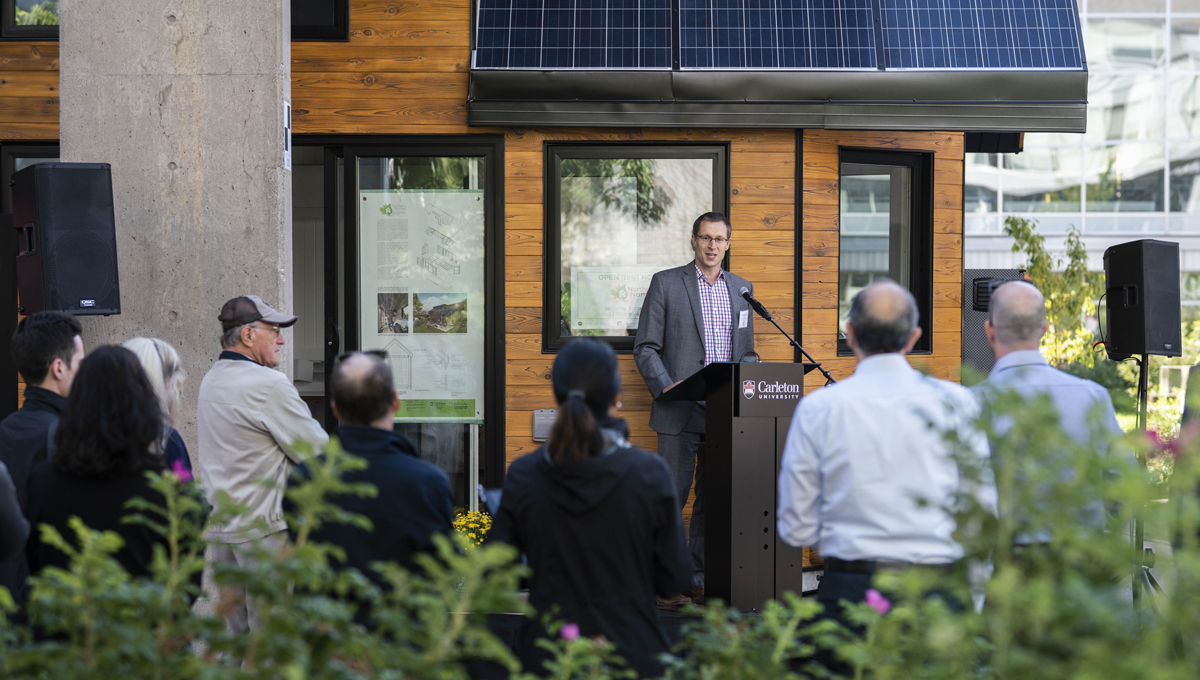
Optimizing A Tiny House for Cold Climates
It’s also optimized to Ottawa’s climate. The Northern Nomad’s solar panels are angled at precisely 42 degrees to maximize exposure to sunshine. In the first three years, they should generate enough electricity to offset the energy it took to make them and, within a decade, enough renewable energy to offset all of the materials in the tiny house.
“This is moving toward the future of sustainability,” says Bucking. “It’s not only using sustainable energy, it’s looking at how quickly that infrastructure pays itself off in terms of its carbon budget.”
Bucking’s vision of sustainability is also about adapting to changes in climate that are already occurring.
“There will be more floods,” he says, ”and more droughts. We really thought about this design, and how this tiny house can react to that. It generates its own water. It’s mobile in case there’s a flood. We can connect to the grid, and at times of greatest need, we can export renewable energy. But I don’t think the solution is thousands of tiny houses. What we need to do is take this way of thinking, and apply it to larger pieces of infrastructure.”
The house is equipped with sensors and monitors which researchers will use to collect data and conduct energy research over the next few years at its new location on campus next to the Urbandale Centre for Home Energy Research, a two-storey red house near Bronson Avenue.
The research will determine if the Northern Nomad fulfills its net-zero energy goal.
Students dedicated long hours to building the Northern Nomad, and learning the skills necessary to do so.
“There were a lot of challenges,” says Seungyeon Hong, a master’s student who managed the project. “The space requirements are limiting. We had so many ideas that we wanted to try. We had to cram all the systems in. It led to lots of discussions. We wanted to fit more solar panels on the roof to have maximum possible generating capacity, which made the roof line stick out. That made a structural problem, which we solved by putting an arch under it.
“I’m really proud to have worked on this. It’s been incredible leading a team of really talented students, and also difficult when you have so many smart people on one team. It’s very, very hard to co-ordinate.”
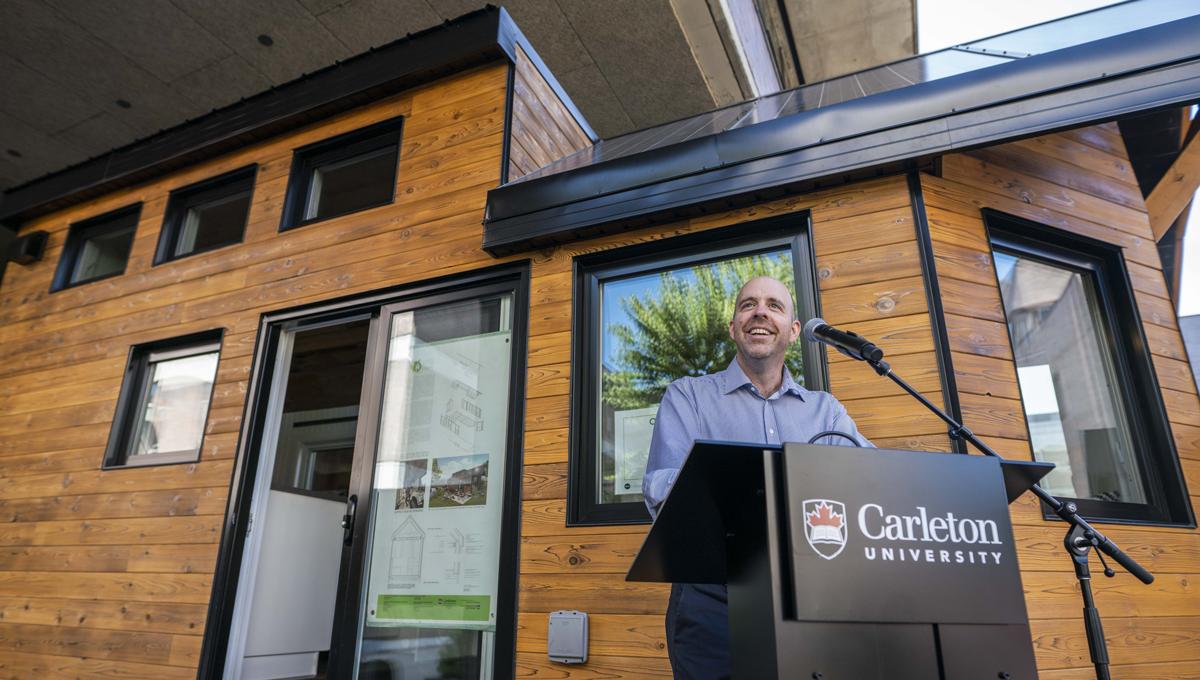
Experiential Learning Opportunities
None of the students had ever built a tiny house before and they were mentored in construction trades. They also raised the funds needed to complete the project.
“It started with my idea,” says Bucking, “but quickly became the students’ vision and project. In 2016, I told the students that if they reached out to get industry funding and sponsorships, we’d build it the following summer. By the end of that capstone project, they’d brought together 30 sponsors. They reshaped the project and figured other pieces of the design. Every student had a very impactful role.”
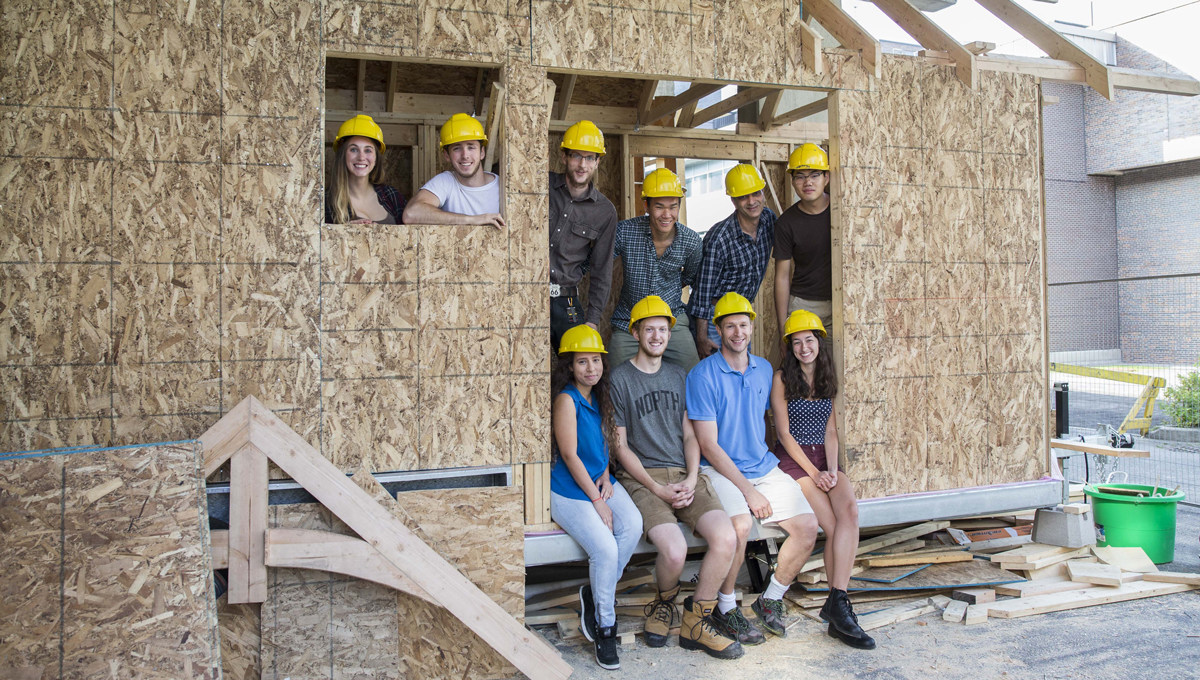
Bucking hired recent Azrieli School of Architecture and Urbanism graduate, Brigitte Martins, to draft the initial design, then put the project in the hands of 17 of his students, who each specialized in one aspect of its construction and design:
- Carter Shieck, revit modeller
- Connor Baily, research assistant
- Connor Ruprecht, exterior finishing
- Eric Ho, mechanical systems and smart homes features
- Jin Kyung Kim, product/UX design
- Joel Becker, roof systems
- Josh Reinhart, electrical systems and installation
- Mais Al-Obaidi, electrical systems
- Priscille Henry, interior design
- Seungyeon Hong, construction, energy modelling and management
- Taylor Murray Ling, transformable spaces design
- Umar Hafeez, media and water
- Gaspar Zalba, Building Information Modelling, revit MEP
- Kailey de Silva, energy modeling
- Paige Waldock, water
- Sandra Lunn, budget, envelope, LCA
- Samantha Champagne, renewable energy analyzer
“I tried to remove myself and have the students be project managers,” Bucking says. “As much as we’re celebrating the completion of this project, as we move into the research phase, we’re celebrating the Northern Nomad team. Having a group of students come together and build confidence in their skills, I think it means a lot to them. You can see students and their families today, and they’re really proud of what they did. They can say: ‘I designed this. This is what I did for my whole summer.’ I think that’s really special.”
Northern Nomad was sponsored by The Borealis Foundation, Jeld-Wen Windows & Doors, Lumbec Inc., Atmosphère & Bois, Barr Plastics Inc., Bonds Décor Ottawa, Bullfrog Power, Canadian Solar, the Canadian Urethane Foam Contractors Association, Carleton Student Engineering Society, Carleton University Faculty of Engineering and Design, Carleton Undergraduate Engineering Students’ Equipment Fund, Carleton University Solar Energy Systems Laboratory, Aventure Tile, Climate Works, Dillon Consulting Ltd., DS Plumbing, Envirocentre, Grandor Lumber, Herman’s Timber-Frame Homes, Hetti Group, Lamin-art, Insultech Insulation Specialists, Home Hardware (Elmvale Acres and Richmond), Lunos, Merkley Supply Ltd., Morin Bros. Inc., Pythagorean Group, S2E Technologies Inc., and Schlüter Systems, Siga Building Wrap, Stonesense, Sun-Mar, The Wood Source Inc. and Westboro Flooring and Décor.
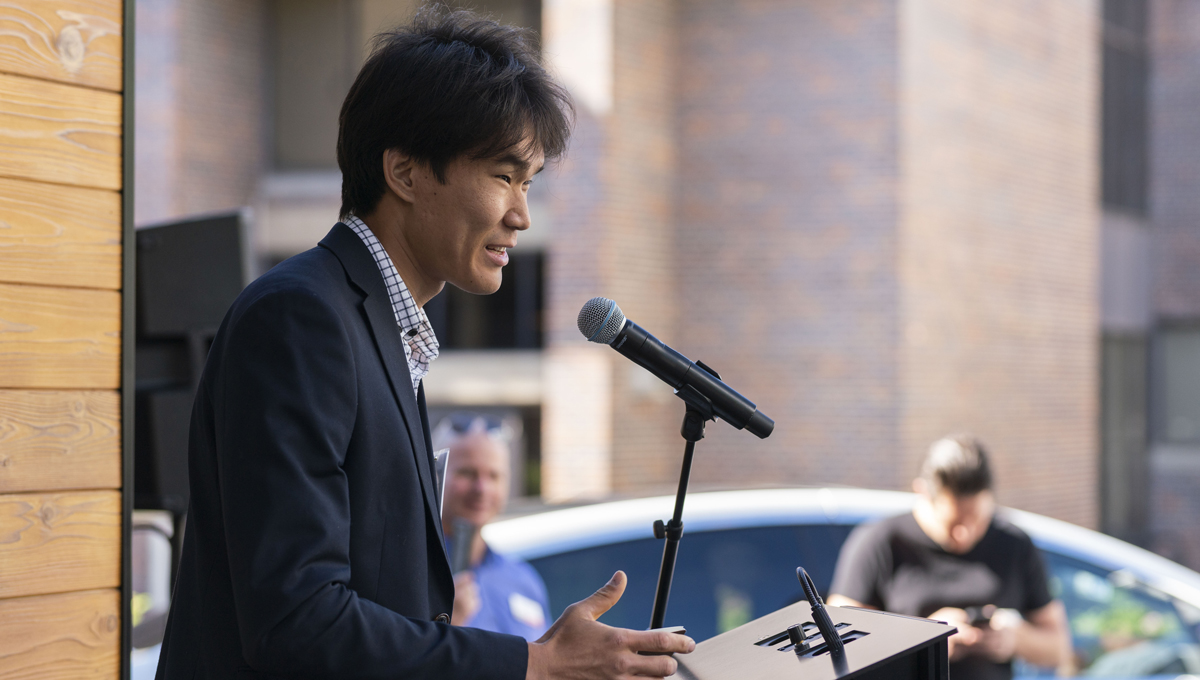
Monday, September 10, 2018 in Architecture, Faculty of Engineering and Design
Share: Twitter, Facebook


